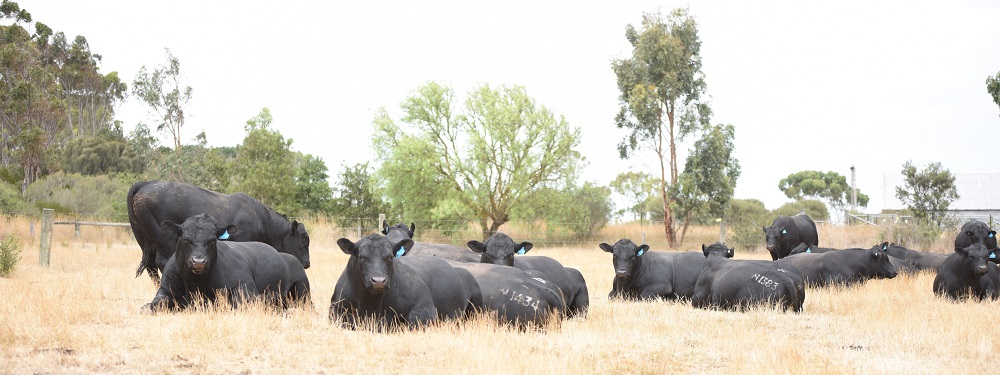Te Mania Angus director Tom Gubbins looks at measuring docility within the stud’s breeding program, how it is managed, and how generations of data supplied to Angus Group Breedplan show that docility is highly heritable.
At Te Mania Angus to measure docility, we crush-score our animals on a scale from 1 to 5, using the Angus Breedplan descriptions.
All Te Mania Angus cattle are run in large contemporary groups, which means variations in animal temperament provides quantifiable information to accurately calculate a heritability in the trait.
We need to understand discovering heritability is like an audit of the process – just as an accountant balances the books, adding different columns to cross check.
Now heritability is calculated and checked, it means a portion of the variation in the trait is influenced by genetics and this is what we rely on to make our breeding decisions.
Let’s look at this from a different viewpoint. Due to the fact we score thousands of related animals in constructed groups, they have a different mean and distribution of docility scores to other related animal groups.
To achieve results where this genetic variation can be repeated at different times and locations with the same result is the evidence it works.
Most Te Mania Angus cattle will score around 2 – we rarely get any 4s or 5s anymore because we have been doing it for so long our bell curve has moved towards 1. So the genetic distribution is more likely to be docile.
We also perform docility scores on all the young weaners as this information improves the accuracy of the weaners’ parents – and the entire herd – now and into the future.
Te Mania Angus has been measuring docility for 20 years and collecting the data a long, long time before the EBV was developed.
Our herd is particularly quiet phenotypically because we put all our stockmen and women through Low Stress Stock Handling schools and handle our animals with care.
This management protocol does not bias the EBV because it is calculated on the variation between animals. Related animals in different herds will get different scores but the rank of the animals will be similar.
If you compare that to a different herd collecting temperament data where the animals are phenotypically wild, for whatever reason, then the variation between them is what they are looking for.
So the animals that are quiet in their herd will be related to the quiet ones in ours, it’s just that the score will be different.
At Te Mania Angus we don’t generally cull on the phenotype.
We always cull a 5, but we wouldn’t cull a 4 straight away. We would give it a second chance in a month or so and see what it does at that time.
The data itself would not change; it would stay as a 4 but it is important that the animals scored on that day were all scored at the same time and in the same contemporary group so they can be compared for the purposes of statistical accuracy.
Te Mania Angus runs mobs of as many as 250 weaners, who get scored together at weaning, which we do at 4-4.5 months.
The cows then need to be weighed and condition scored to work out the cow’s mature weight, plus we do a few more cow productivity traits at this time. The cows are put away in the paddock and the calves go through the yards that afternoon for all the initial assessment of weighing and temperament scoring.
We don’t publish the temperament score, we publish the genotype, the EBV.
At Te Mania Angus we are selling bulls to improve our clients in breeding profitable offspring.
Therefore we try to encourage our clients to use genotypic information (EBVs) rather than phenotypic (looking at the raw data, weights, scrotal size, scans) because the genotype is what they need.
| Score | Code | Description |
| 1 | Docile | Mild disposition, gentle and easily handled, stands and moves slowly during handling, undisturbed, settled, somewhat dull, does not pull on headgate when in crush, exits crush calmly. |
| 2 | Restless | Quiet but slightly restless, may be stubborn during handling, may try to back out of crush, pulls back on headgate, some flicking of tail, exits crush promptly. |
| 3 | Nervous | Manageable but nervous and impatient, a moderate amount of struggling, movement and tail flicking, repeated pushing and pulling on headgate, exits crush briskly. |
| 4 | Flighty | Jumpy and out of control, quivers and struggles violently, may bellow and froth at mouth, continuous tail flicking, defecates and urinates during handling, frantically runs fence line and may jump when penned individually, exhibits long flight distance and exits crush wildly. |
| 5 | Aggressive | May be similar to score 4 but with added aggressive behaviour, fearful, extreme agitation, continuous movement which may include jumping and bellowing while in crush, exits crush frantically and may exhibit attack behaviour when handled alone. |





